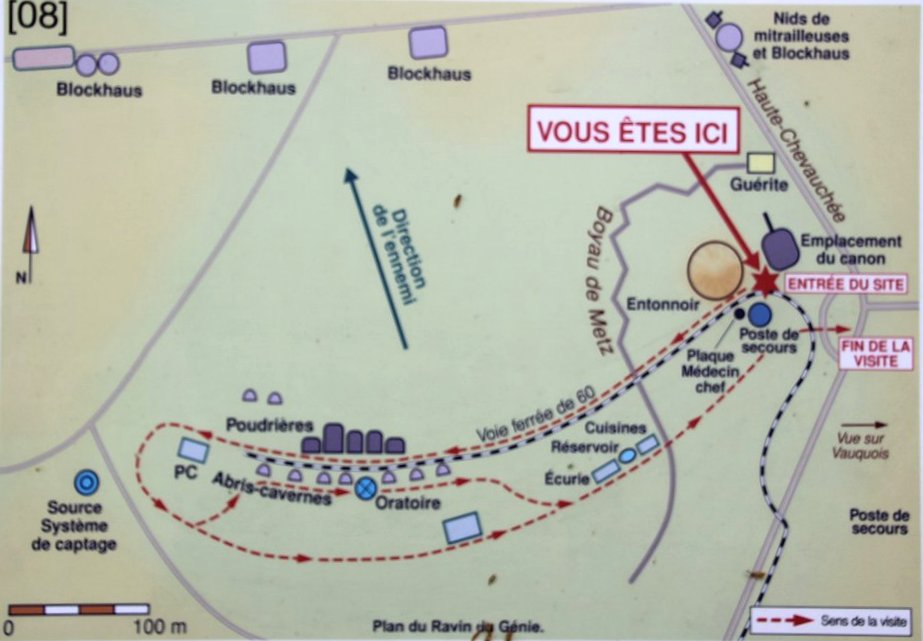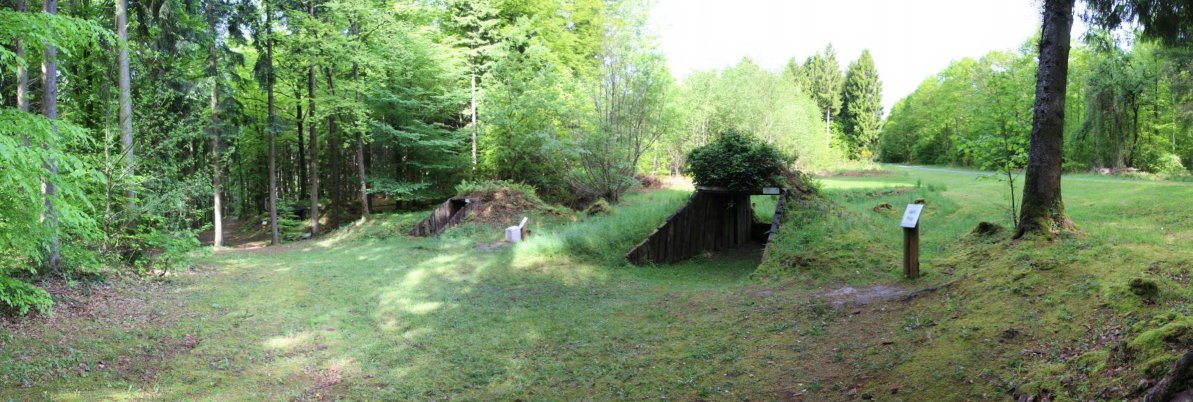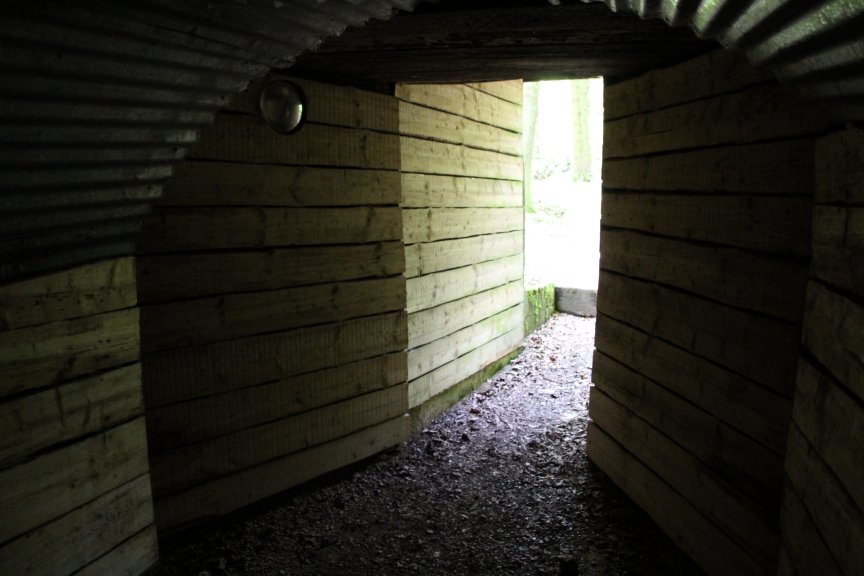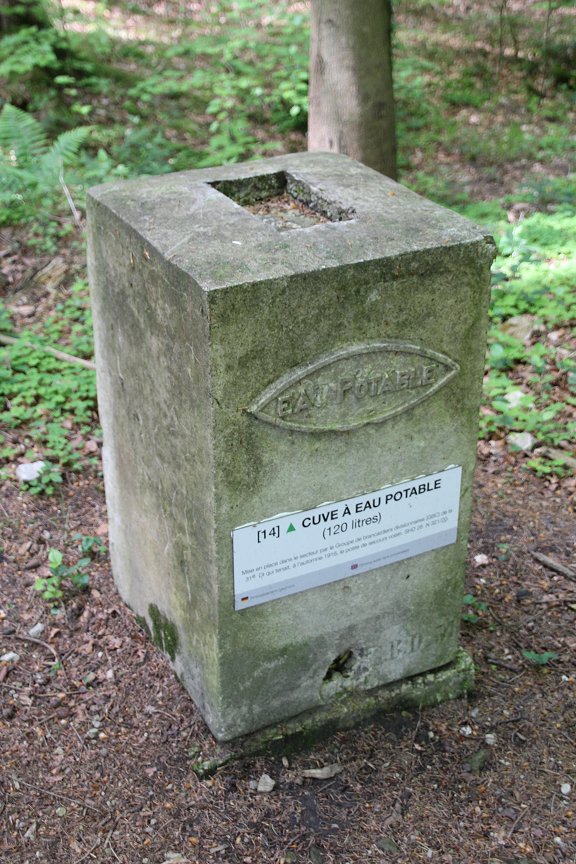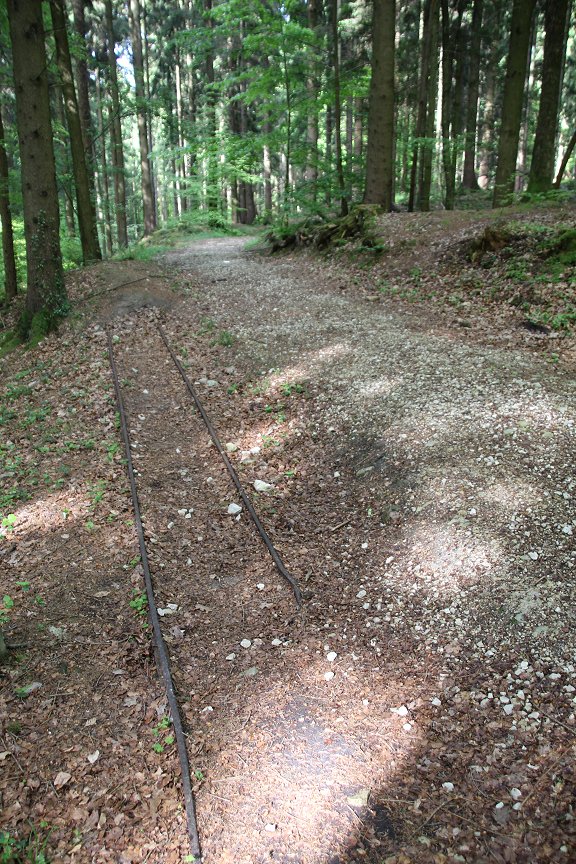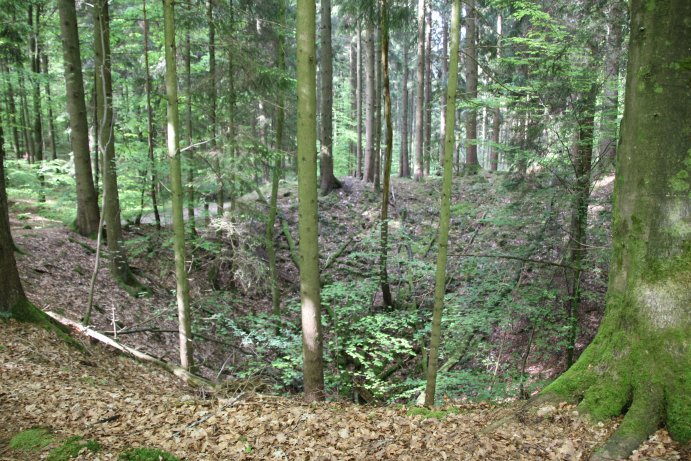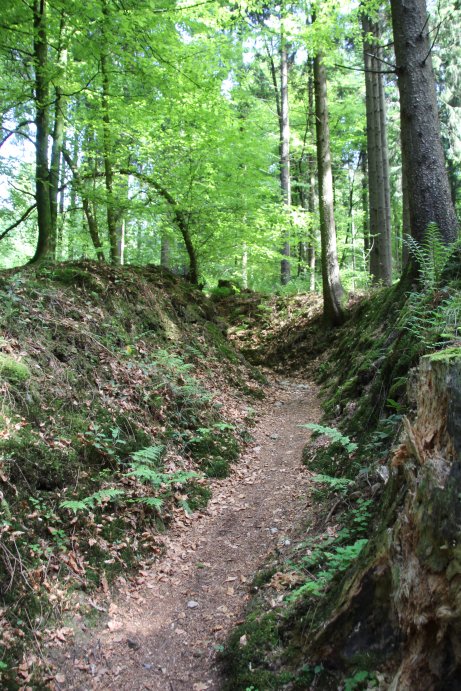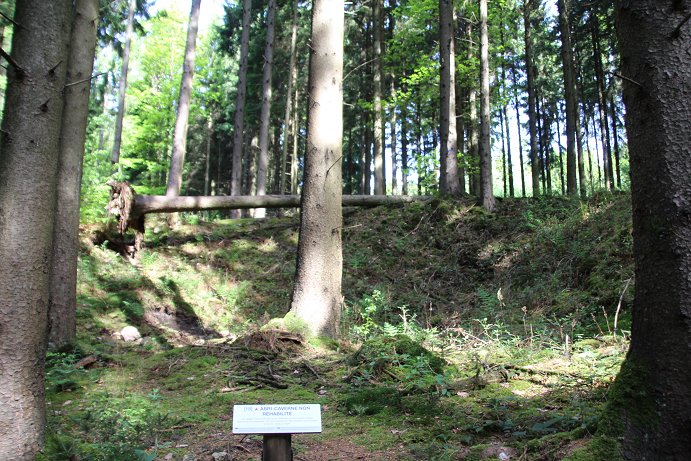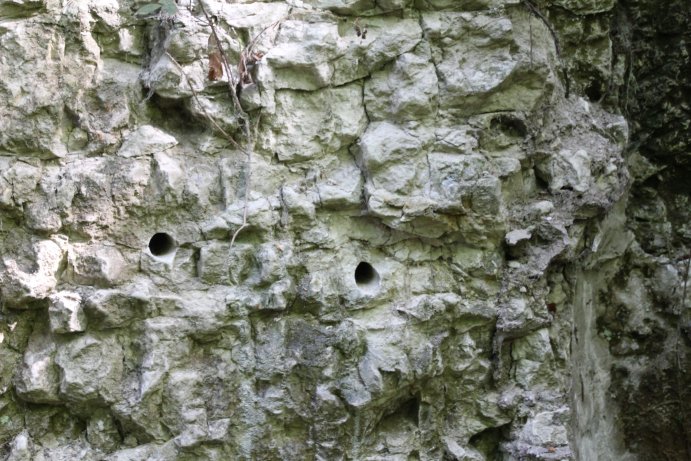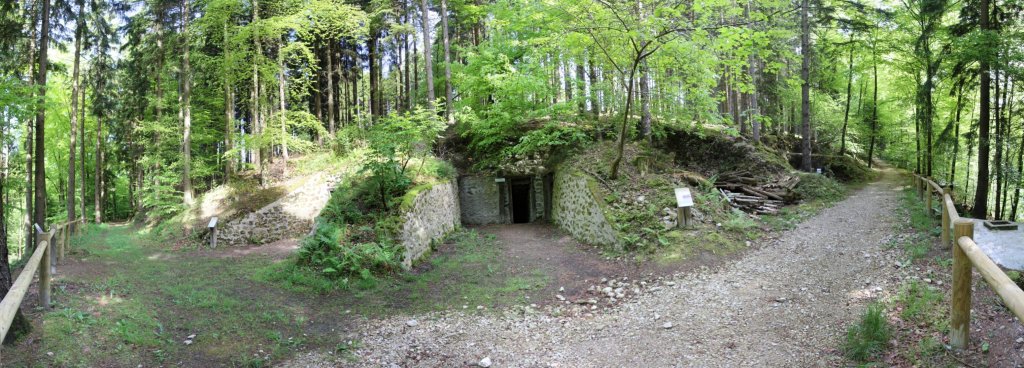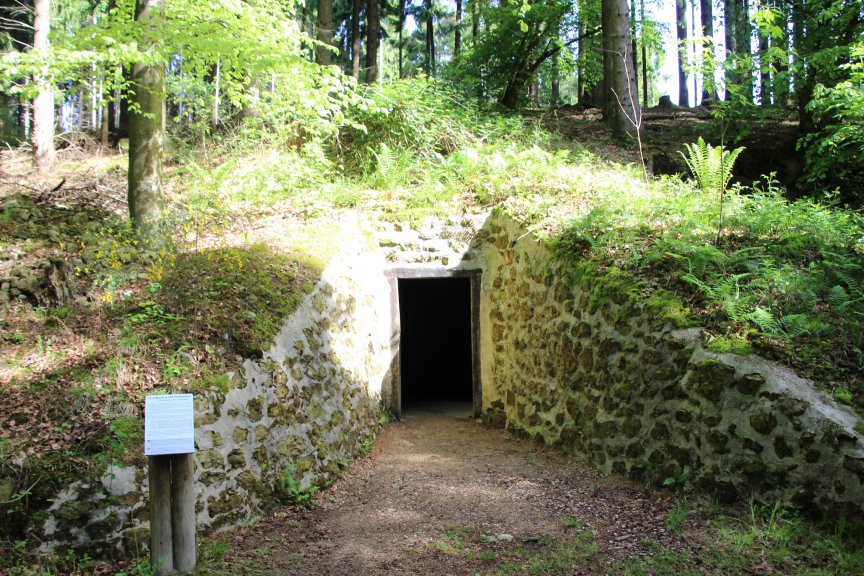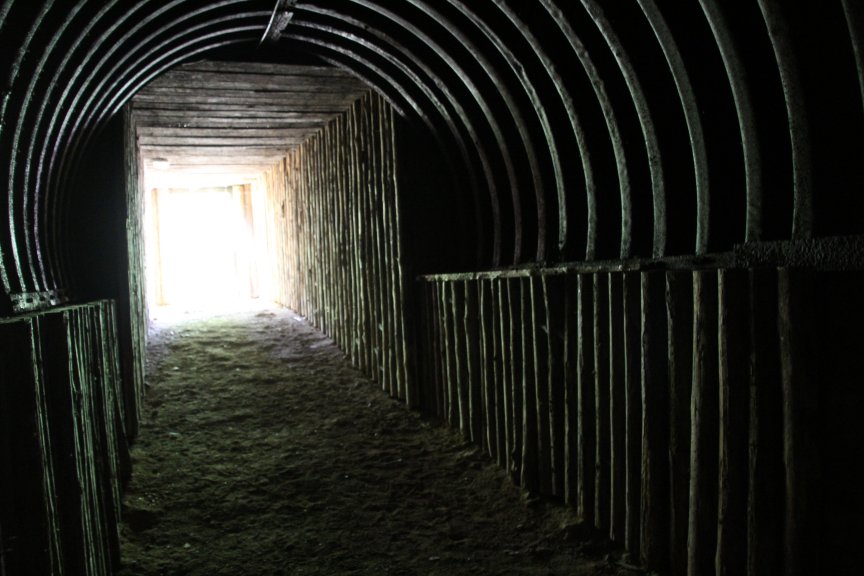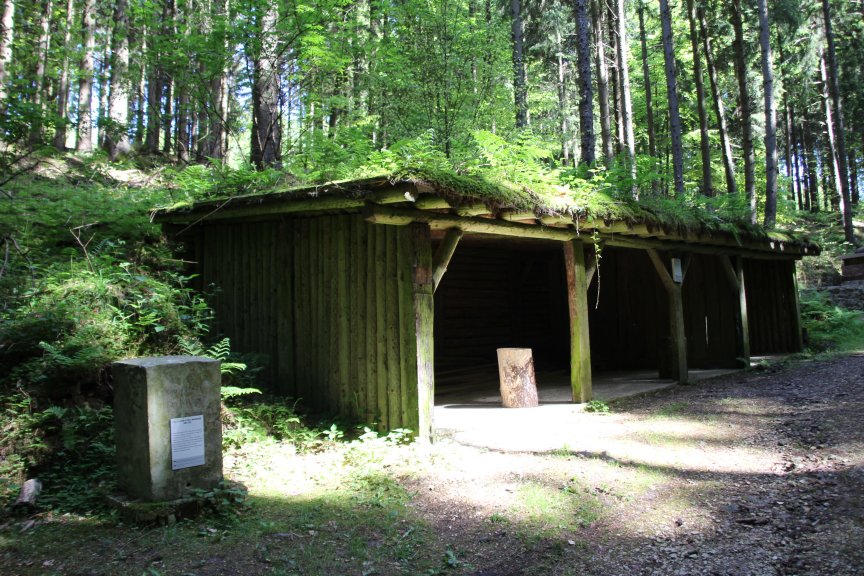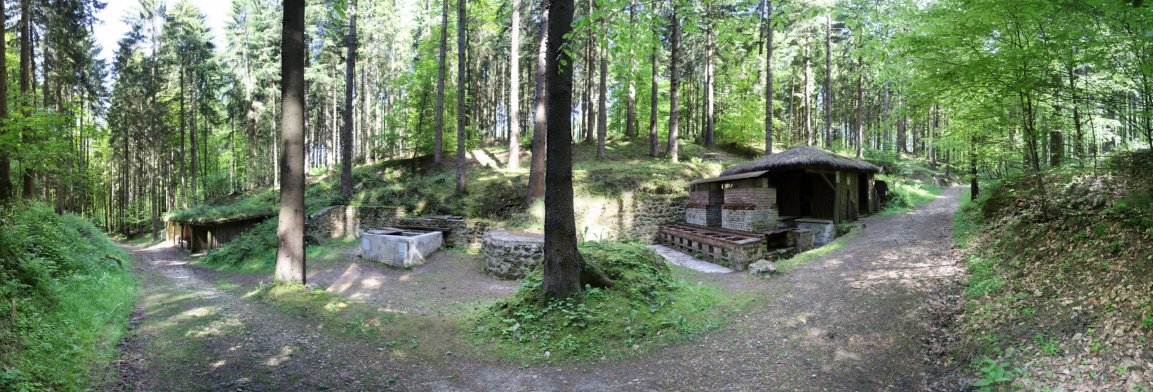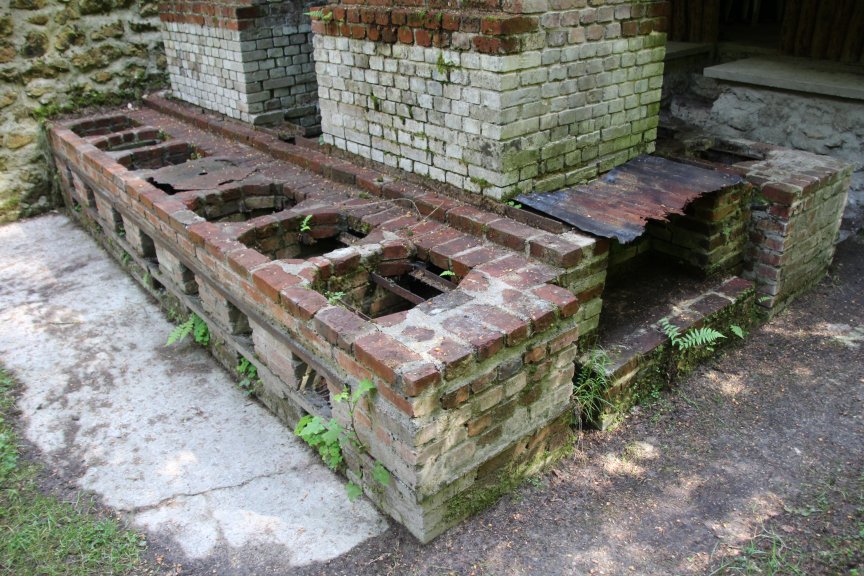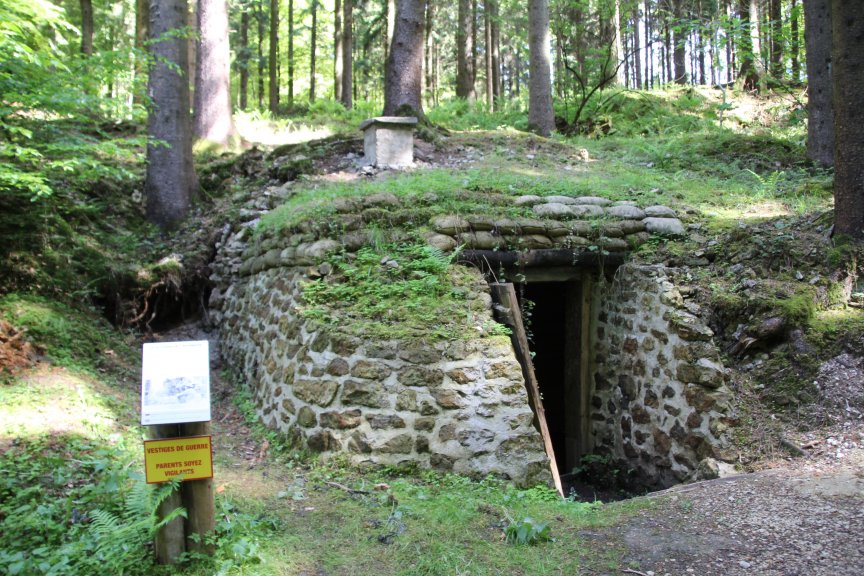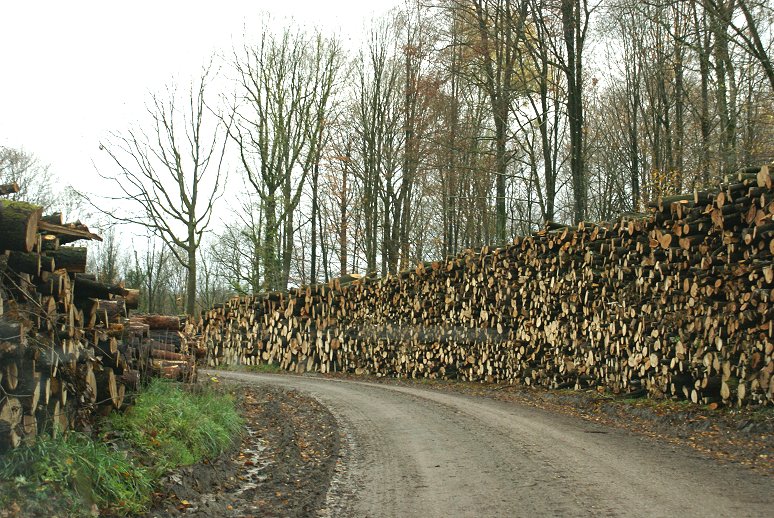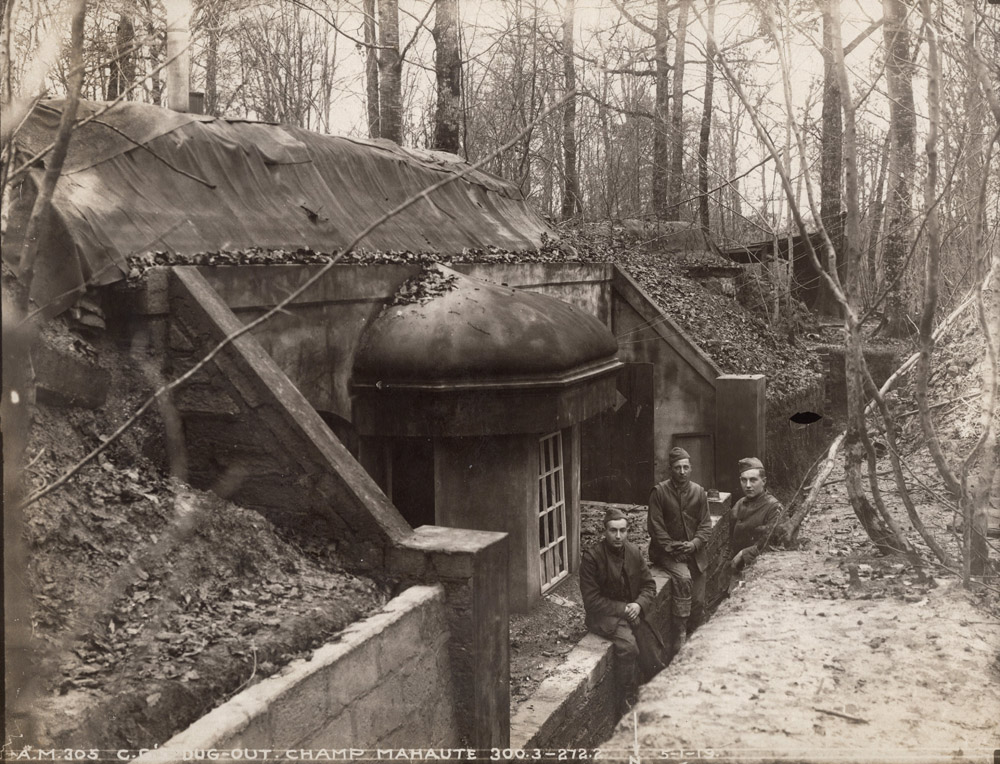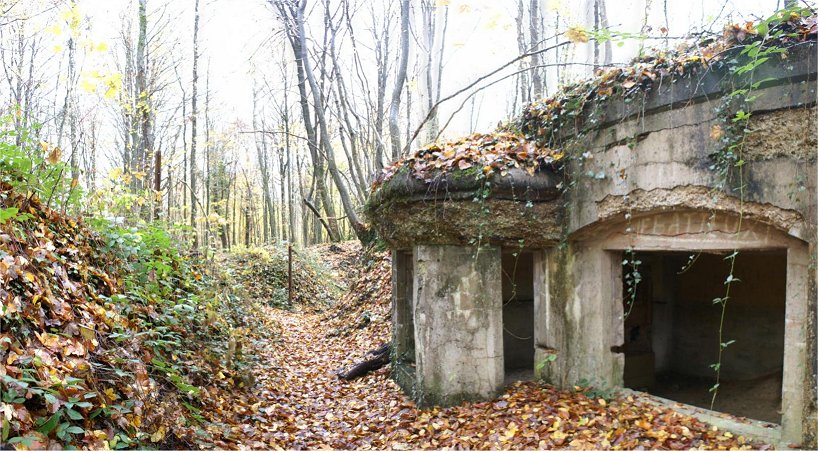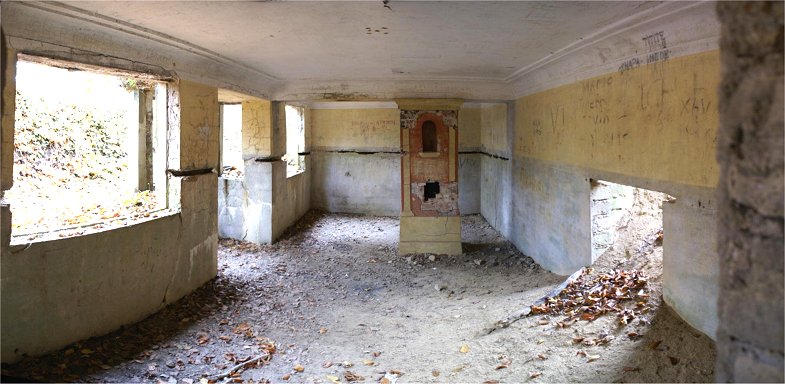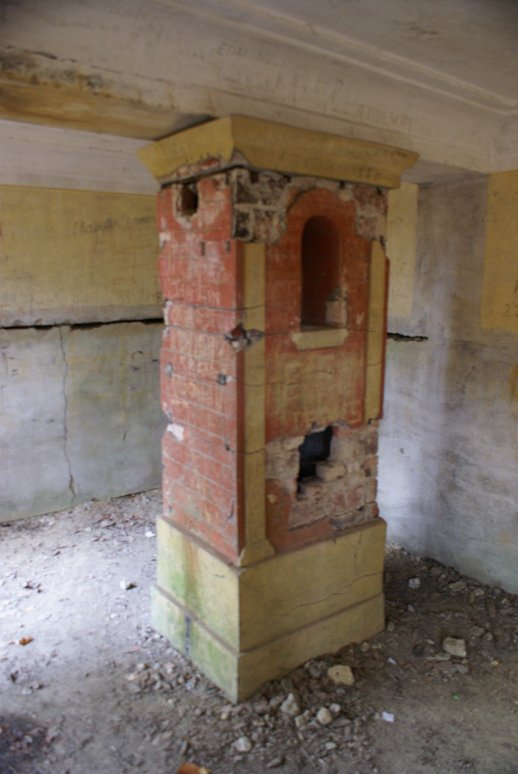The 368th Regiment was just down the road, attached to the French army.
To the east of here, trenches and mine craters are well preserved.
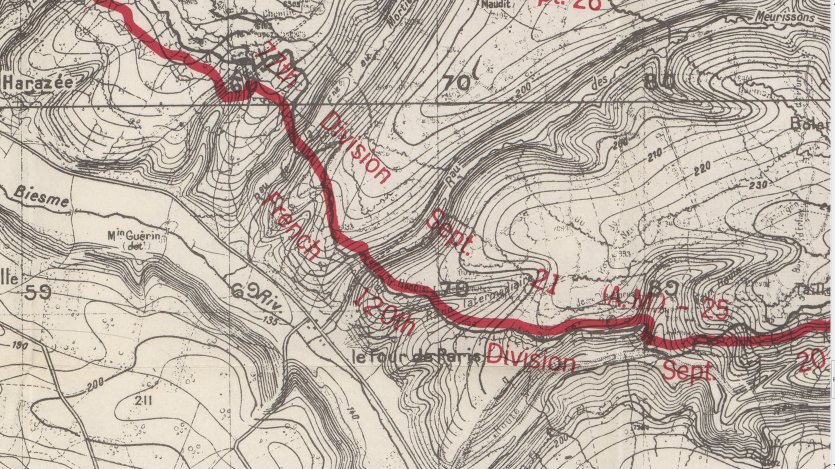
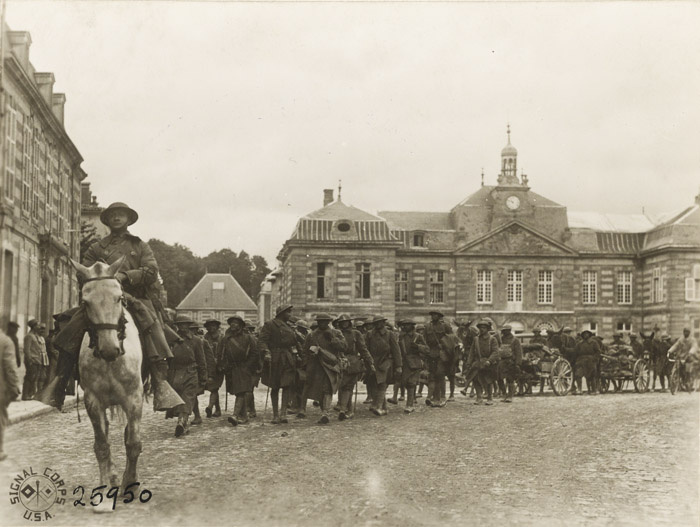
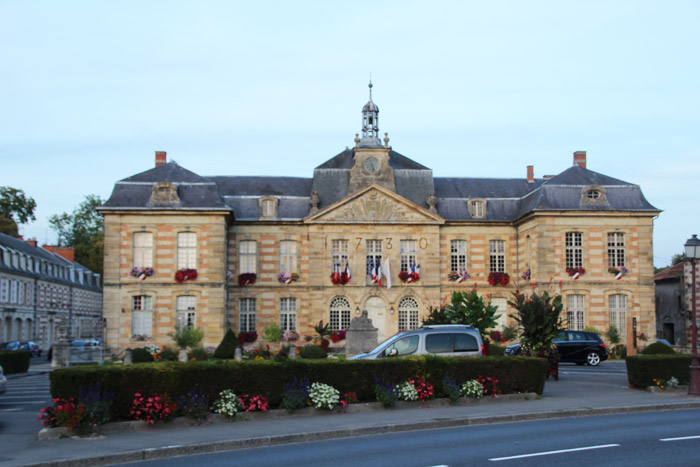
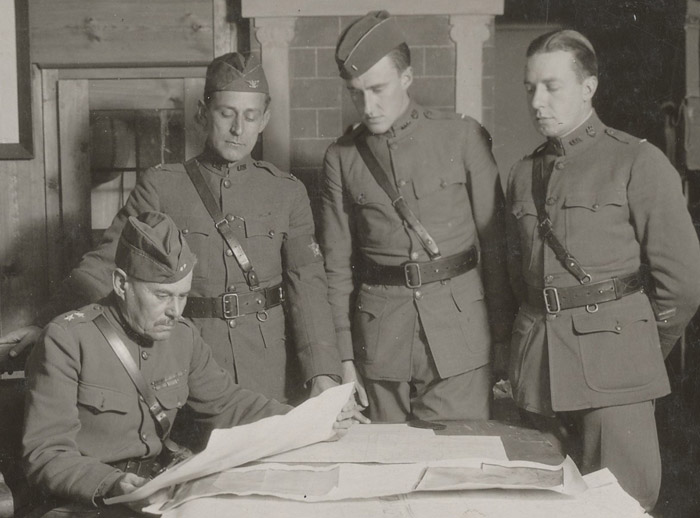
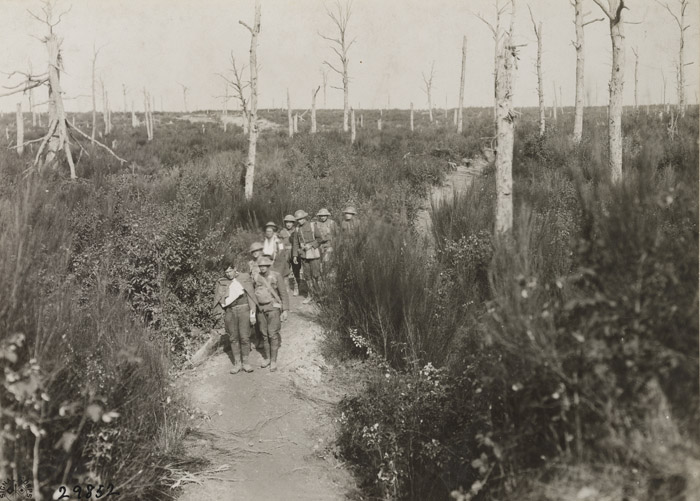
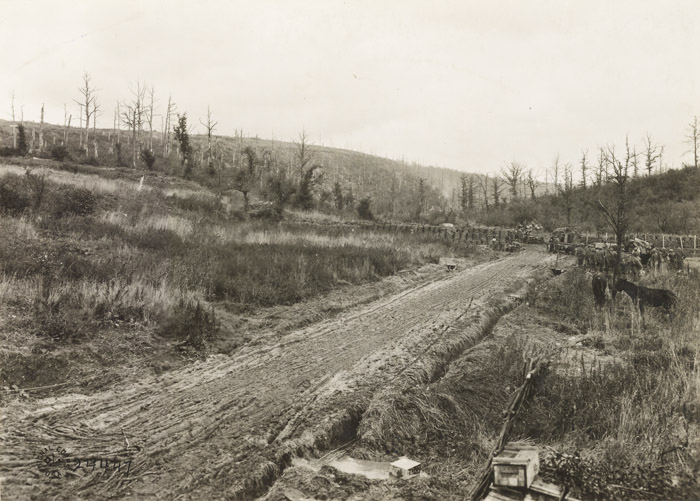
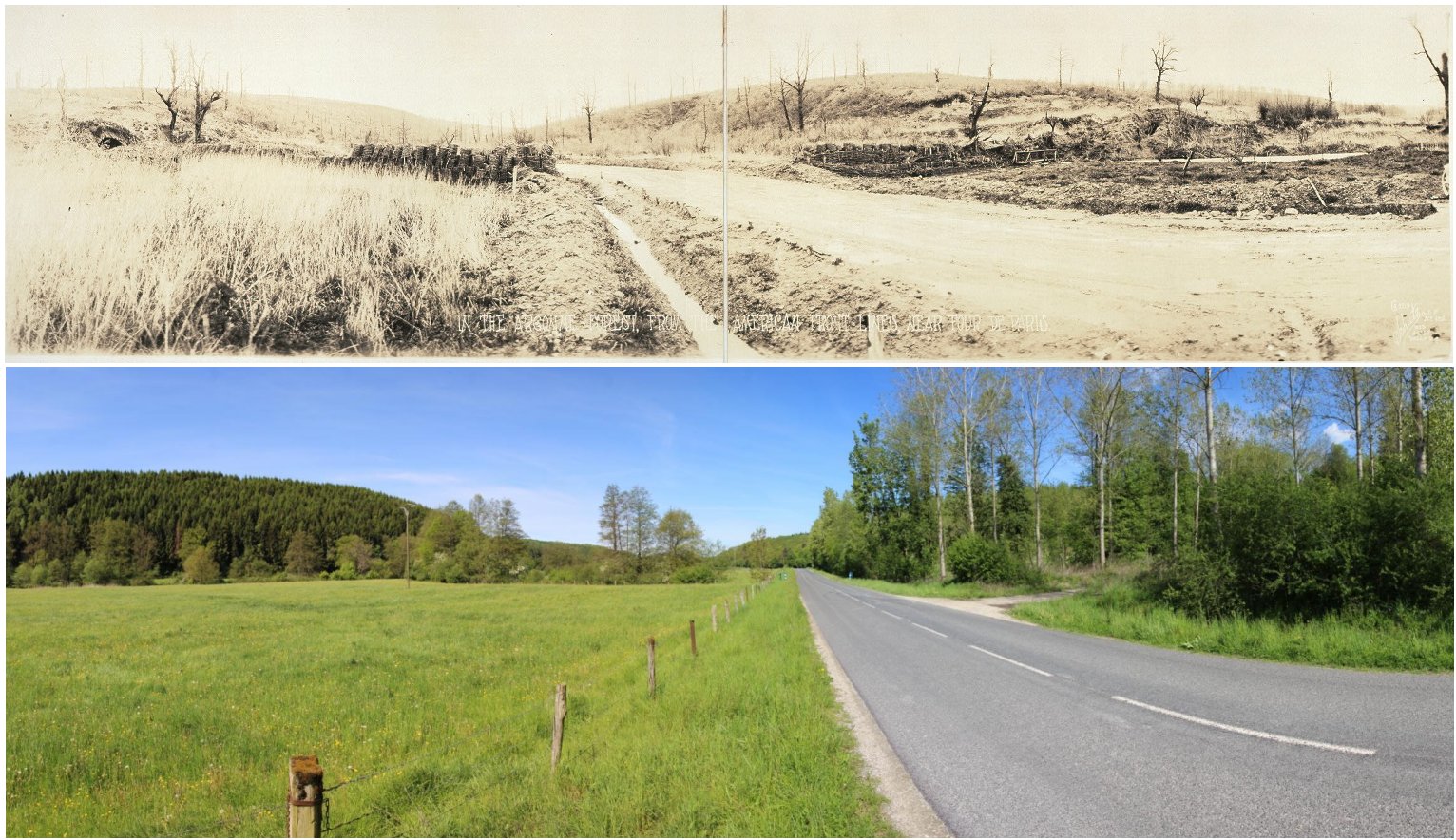
| As trench lines settled down in this area in 1914,
the chateau, glassworks, and houses near Four de Paris were destroyed. After the
fighting ended, Schutz Group Photographers of Washington, D.C. took a
panorama of the area, now available on the Library of Congress website, which I've tried to replicate. The
frontlines occupied by the 77th Division on September 21st were on the
small ridge on the right half of the panorama with German defenses
beyond to the north. The 77th was an experienced division by this
point, and it would be the only division to take part in the entire
offensive without relief. The 368th Regiment was just down the road, attached to the French army. To the east of here, trenches and mine craters are well preserved. |
 |
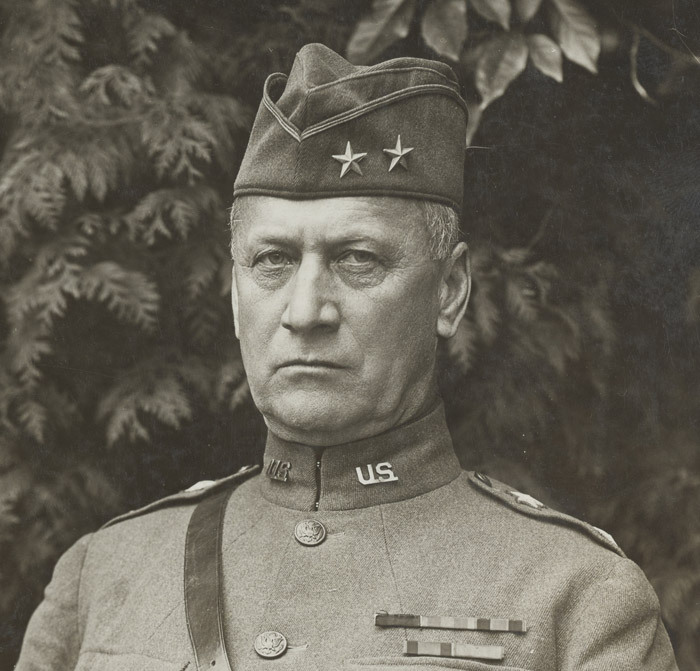


| The Haute Chevauchee is about three and a half miles west of
the contested ridge known as Butte Vauquois, and in July and
September 1915 the German began attacking here in an effort to turn the
French out of the Butte. Once their efforts bogged down they
resorted to mining, and the French followed suit. From October
1915 to the end of June 1916, 223 mines were blown and tunnels were dug
as deep as 40 to 45 meters underground. By September 1917 both
sides had given up major mining efforts. The monument includes remembrances of Italian and Czechoslovak troops in addition to French ones. 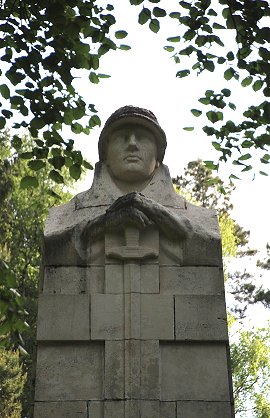 |
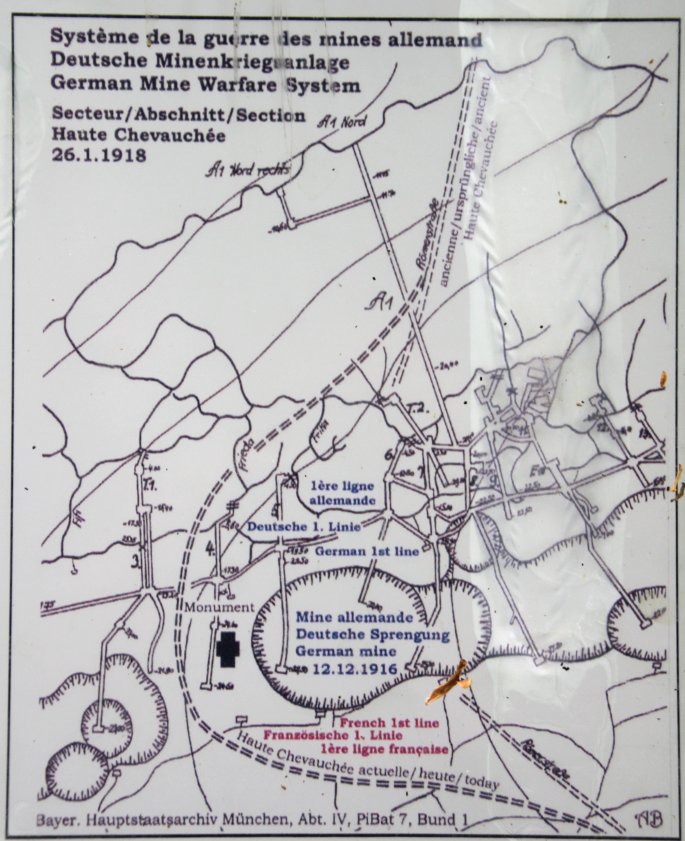 |
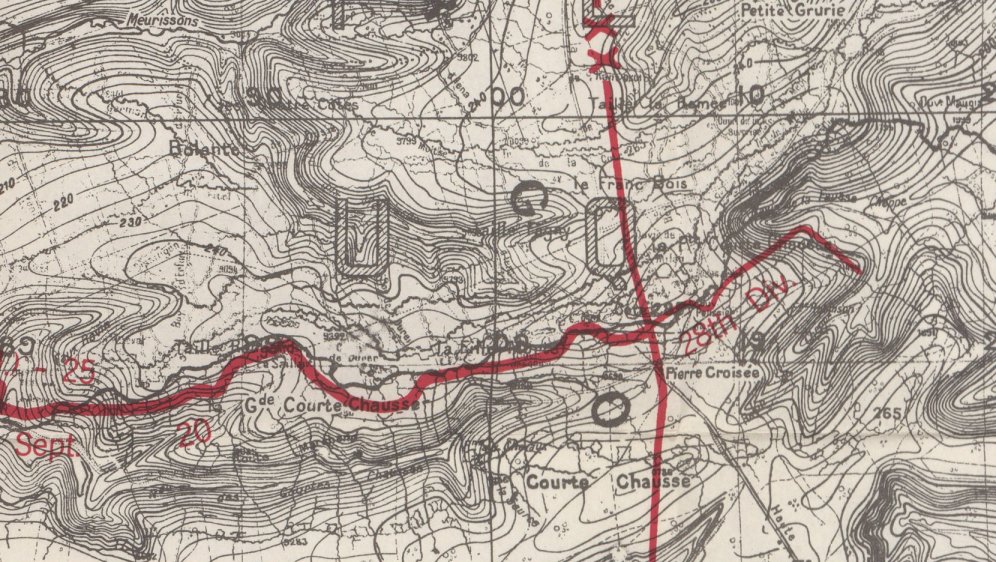 |
 |
